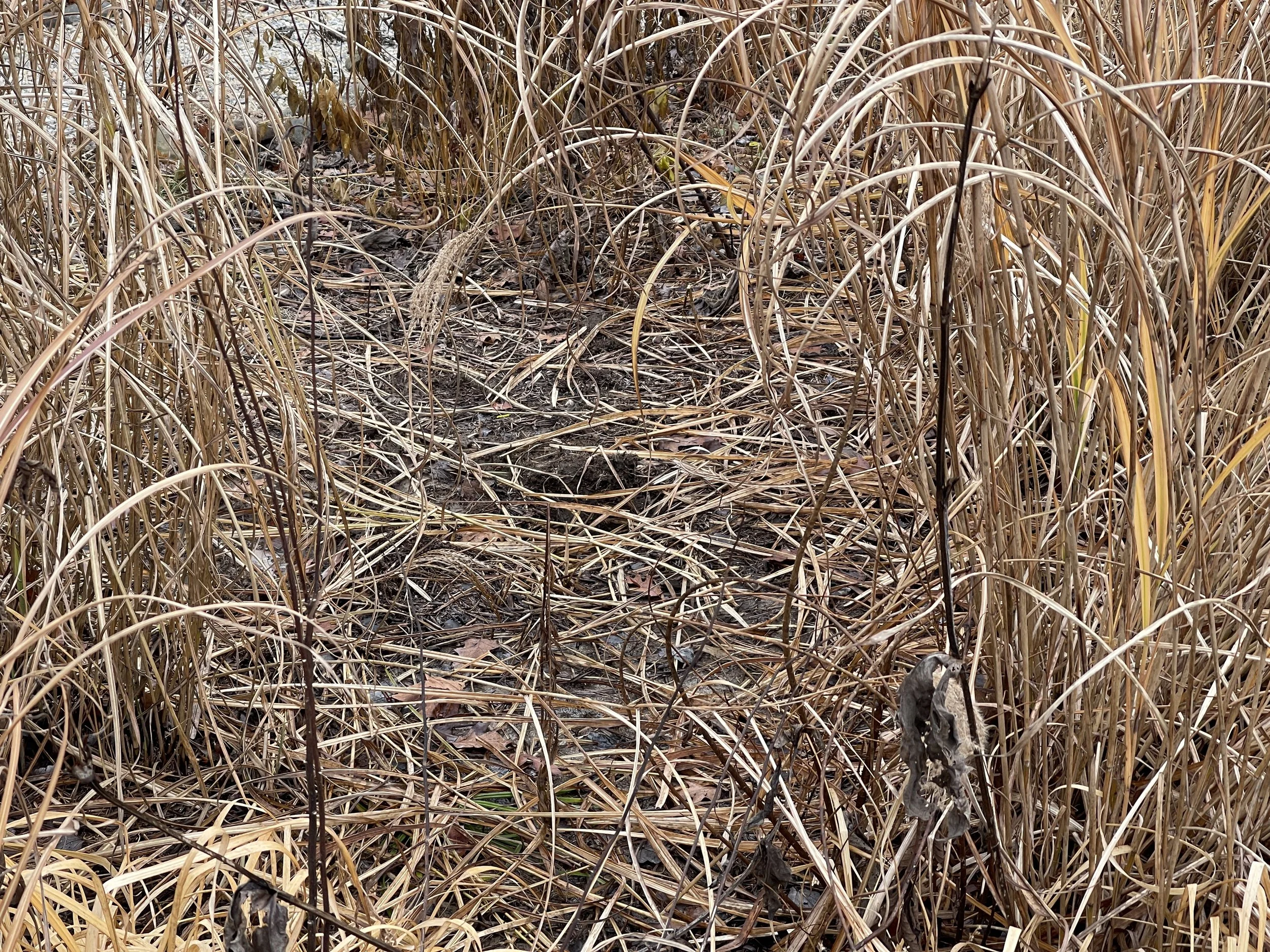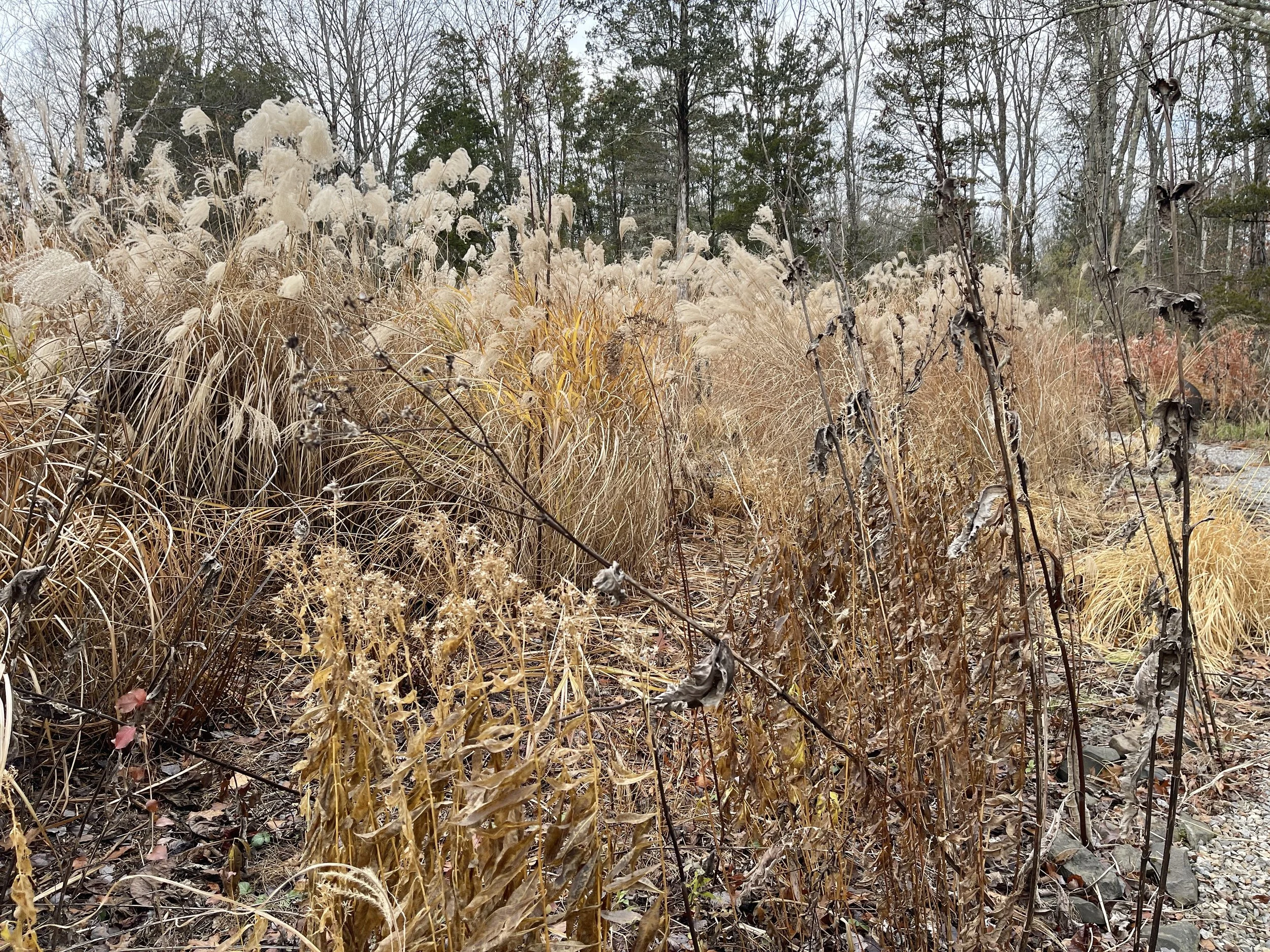Not a new garden, but ...

Time for change. When I started the garden many years ago, I realized I could only use plants highly adapted to my woodland edge, wet, heavy clay ecology. The most successful grass, I discovered, was Miscanthus. Though it’s certainly not native, it’s worked very well as a matrix for the garden. But it makes for a visual uniformity that, though pleasing, has begun to leave me longing for a more varied look. I want more visual hollows and heights in different parts of the garden, a more heterogeneous mixture of structures and colors, more textural contrasts, paths that remain open after torrential rains (so I don’t have to rush to clear paths after storms).
Since late September I’ve removed 20 to 30 Miscanthus, actually probably more, many very large, to open space for other plantings. I like the Miscanthus so, rather than taking out more before winter, I’ll experiment with using the “Chelsea chop” on many remaining ones next year in late spring, hoping that this will delay growth and give me more space to play around with other plantings. I believe the extra space and light early in the season will allow new, smaller plants to get a head start in filling the temporary open space. (I intend, for example, to add several Silphium mohrii, and these will need plenty of space around them.)
One new open space where Miscanthus, large Silphium perfoliatum and Inula were dug out to make way for other grasses and forbs next spring.
I’m spreading seed of two other grasses now in the garden, Chasmanthium latifolium and Pennisetum ‘Moudry’ because, though rather common, they are beautiful and perform very well here. They will be particularly useful in creating low-height edges along pathways and interior “holes” in parts of the garden. Other low-height possibilities I like are Panicum ‘Cape Breeze’ and Deschampsia cespitosa.
Not enough space here for new plantings, so some of these Miscanthus may go before winter.
Here is another area opened up into the center of a large grassy area. Though I intend to plant warm season grasses in the spring, I happened upon a few small panicums, so put them in at front left. I’ve started a colony of Aster tartaricus Jin Dai out in the center of the space (hardly visible). These grow well in this position but, unlike most of this species, they don’t grow fast or particularly large in this soil. I’ll be adding more new grasses and possibly other scattered forbs here in spring.
One area opened up from edge to center.
Below is another area where several large Miscanthus have been removed. It’s clear more need to go. Several small Molinia ‘Skyracer’ visible on the right are among likely replacements. These Molinias have been shaded out for years, but they grow successfully in another area of the garden where competition is less fierce.
Phlox skeletons in the foreground. I’ll move bunches of phlox from another area and consolidate them all here next spring.
For many years a wall of perennials, shrubs and grasses has blocked the view below to the reflecting pool. The shrubs are still there, though invisible, and new plantings will fill this void come spring.
A bit of destruction … unsettling … but it will be healed.
I’m not sure why I’m making this post. Most of the images show disturbed or destroyed plantings rather than the winter landscape I usually enjoy. Perhaps I want to make this project public to keep pressure on myself. My plans are tentative and highly conceptual, and I won’t know what I’m doing, really, until I get there.
I’ll also be open to suggestions.





